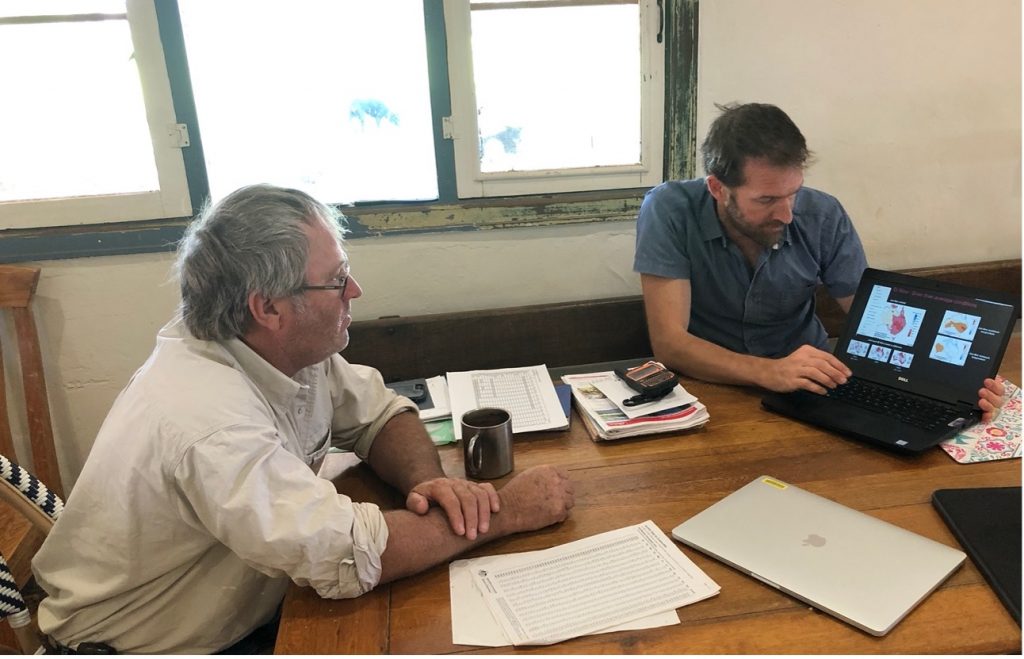Picture: Cattle drover in the outback. Credit: Samille Mitchell (Pixabay)
by Chelsea Jarvis (Centre for Applied Climate Sciences, University of Southern Queensland)
The Northern Australia Climate Program (NACP) is an innovative drought and climate variability research, development, and extension (RD&E) program to enhance business resilience and build capacity to manage climate risk across the northern Australian red meat industry. NACP is funded by Meat & Livestock Australia, Queensland Department of Agriculture and Fisheries, and the University of Southern Queensland. Major project partners include the Bureau of Meteorology (BOM) and the UK Met Office (UKMO).
Red meat producers across northern Australia rely mainly on summer rainfall to grow the pasture that allows them to feed their cattle and maintain their business. However, rainfall across the north is highly variable and droughts and floods are regular occurrences. These events are often linked to phenomena that are prominent in CLEX research, including large-scale climate drivers such as the El Niño Southern Oscillation (ENSO) and the Indian Ocean Dipole (IOD), as well as weather-scale phenomena like the Madden Julian Oscillation (MJO). A failed wet season or severe drought and heat can mean economic losses, environmental impacts such as loss of ground cover, and social impacts such as stress due to ongoing drought conditions. Conversely, flooding and rapid changes in temperature, as seen with the stalled MJO event in February 2019 (see CLEX Briefing Note 6), can also cause serious damage and loss of livestock. If producers are made aware of likely poor seasonal rainfall or extreme events beforehand, they can make management changes to help mitigate impact.
The use of forecasts, from 7-day to seasonal, allows producers to better plan for likely future conditions and adjust their management plans accordingly. However, currently available forecast products do not always meet producer needs and even when useful products are available, producers do not always know where to find them or how to correctly use and interpret the products.

The research component of NACP is tasked with significantly improving the skill of climate forecasts as well as developing new forecast products and researching climate and weather phenomena that can impact red meat producers. NACP has two employees embedded at the UKMO to ensure that the forecasting needs of northern Australia are being incorporated into the latest global circulation model developments, on which ACCESS-S, the seasonal forecasting version of the Australian community’s model, is based. Similarly, two NACP employees are based at the BOM in Melbourne. Here, they work with BOM teams to investigate climate topics relevant to the northern red meat industry, such as flash droughts, the Australian monsoon, causes of extreme events, and multi-year forecasting. NACP also works on the development of new tools and forecasts to better meet producer needs. For example, NACP recently created a ‘rainfall burst forecast’ product that shows the likelihood of receiving 20, 30, 50, or 70 mm of rain within three consecutive days in a given weekly or fortnightly period. This was in response to feedback from producers who indicated they wanted a forecast for ‘meaningful’ rainfall – enough rainfall to grow pasture or fill a dam – rather than just a chance for ‘any’ rain (0.2 mm). The Australian Combined Drought Indicator (CDI), consisting of rainfall, soil moisture, evapotranspiration, and Normalised Difference Vegetation Index data was developed by NACP to better represent drought conditions. CDI maps are generated for 1, 3, 6, 9, 12, 24, and 36 months and have recently been used to assist in drought declarations in Queensland.
The NACP extension team consists of 16 ‘Climate Mates’, who are regionally located and were hired based on their local knowledge of the red meat industry and their networks rather than their climate knowledge. The Climate Mates were trained in climate and weather basics and are supported by a climatologist, as well as by NACP R&D personnel and project partners. They are tasked with showing producers where to find climate and weather information online, how to correctly interpret that information, and also how to apply that information to the producer’s management plan. They also communicate feedback from the producers to the R&D teams, so as to ensure R&D are targeting producer needs. When possible, NACP invites a BOM researcher to present at NACP workshops. This allows producers to put a ‘face’ to the BOM and also allows the BOM to hear feedback directly from producers. NACP extension is always interested in learning about research that focuses on northern Australia and may be of interest to red meat producers. This includes but is not limited to topics around extreme events, the Australian monsoon, climate driver interaction, and causes of multi-year droughts.
The integrated structure of RD&E has allowed NACP to successfully meet producer/industry demands while also pursuing world-class impactful research. For more information, please see www.nacp.org.au or contact Chelsea.jarvis@usq.edu.au.
Additional reports on NACP Work
- Lessons learned in outback Western Australia (pdf) by Andrew Marshall.
- NACP Reports and Publications.
